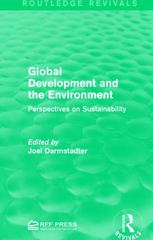The Demand for Clean Air In Example 4.6L\" we used the demand curve for clean air to calculate the benefits of a cleaner environment. Now let's examine the publicgood characteristics of clean air. Many factors, including the weather, driving patterns, and industrial emissions, determine a region's air quality. Any effort to clean up the air will generally improve air quality throughout the region. As a result, clean air is nonexclusive: It is difficult to stop any one person from enjoying it. Clean air is also nonrival: My enjoyment does not inhibit yours. Because clean air is a public good, there is no market and no observable price at which people are willing to trade clean air for other commodities. Fortunately, we can infer people's willingness to pay for clean air from the housing markethouseholds will pay more for a home located in an area with good air quality than for an otherwise identical home in an area with poor air quality. Let's look at the estimates of the demand for clean air obtained from a statistical analysis of housing data for the Boston metropolitan area.25 The analysis correlates housing prices with the quality of air and other characteristics of the houses and their neighborhoods. Figure 18.159 shows three demand curves in which the value put on clean air depends on the level of nitrogen oxides and on income. The horizontal axis measures the level of air pollution in terms of parts per hundred million {pphm} of nitrogen oxide in the air. The vertical axis measures each household's willingness to pay for a one-partper-hundred-million reduction in the nitrogen oxide level. Figure 18.16 The Demand for clean Air \"til \"mgr-Lees 10 Pay High Interm- Erilllll 2500 Middle Income ZUUH Low Income 1501": Mill] 5H\" 1 L l l I L l l I l U ] 2 3 4 5 6 F" 3 9 1i] Nitmgen oxide {pphm} The three curves describe the willingness to pa},r for clean air (a reduction in the level of nitrogen oxides) for each of three different households (low income, middle income, and high income]. In general, higher-income households have greater demands for clean air than lower-income households. Moreover, each household is less willing to pay for clean air as the level of air quality increases. The demand curves are upwardsloping because we are measuring pollution rather than clean air on the horizontal axis. As we would expect, the cleaner the air, the lower the willingness to pay for more of the good. These differences in the willingness to pay for clean air vary substantially. In Boston, for example, nitrogen oxide levels ranged from 3 to 9 pphm. A middleincome household would be willing to pay $800 for a1 pphm reduction in nitrogen oxide levels when the level is 3 pphm, but the figure would jump to $2200 for a 1 pphm reduction when the level is 9 pphm. Note that higher-income households are willing to pay more than lower-income households to obtain a small improvement in air quality. At low nitrogen oxide levels [3 pphm), the differential between low and middleincome households is only $200, but it increases to about $700 at high levels (9 pphm}. with quantitative information about the demand for clean air and separate estimates of the costs of improving air quality, we can determine whether the benefits of environmental regulations outweigh the costs. A study by the National Academy of Sciences of regulations on automobile emissions did just this. The study found that controls would lower the level of pollutants, such as nitrogen oxides, by approximately 10 percent. The benefit of this 10percent improvement to all residents of the United States was calculated to be approximately $2 billion. The study also estimated that it would cost somewhat less than $2 billion to install pollution control equipment in automobiles to meet emissions standards. The study concluded, therefore, that the benefits of the regulations did outweigh the costs








